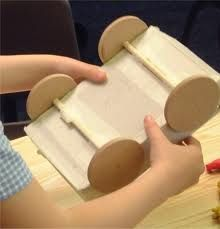Design Technology
"Design is not just what it looks like and feels like. Design is how it works."
Steve Jobs
Intent
We want to prepare children to deal with tomorrow’s rapidly changing world. It encourages children to become independent, creative problem-solvers and thinkers as individuals and as part of a team. It will enable them to identify needs and opportunities and to respond to them by developing a range of ideas and by making products and systems.
Through the study of Design and technology, they combine practical skills with an understanding of aesthetic, social and environmental issues, as well as functions and industrial practices. This allows them to reflect on and evaluate present and past design and technology, its uses and its impacts. Design and Technology helps all children to become astute and informed future consumers and potential innovators.
Implementation
The teaching of Design Technology follows the National Curriculum through the use of Design and Technology Association's 'Projects On A Page' documents. Children design products with a purpose in mind and an intended user of the products.
We focus on
- Structures
- Mechanisims
- Textiles
Food technology is implemented across the school with children developing an understanding of where food comes from, the importance of a varied and healthy diet and how to prepare this.
"Design is intelligence made visible."
Alena Wheeler.
Example Work

The National Curriculum
Design and technology is an inspiring, rigorous and practical subject. Using creativity and imagination, pupils design and make products that solve real and relevant problems within a variety of contexts, considering their own and others’ needs, wants and values. They acquire a broad range of subject knowledge and draw on disciplines such as mathematics, science, engineering, computing and art. Pupils learn how to take risks, becoming resourceful, innovative, enterprising and capable citizens. Through the evaluation of past and present design and technology, they develop a critical understanding of its impact on daily life and the wider world. High-quality design and technology education makes an essential contribution to the creativity, culture, wealth and well-being of the nation.
Aims
The national curriculum for design and technology aims to ensure that all pupils:
- develop the creative, technical and practical expertise needed to perform everyday tasks confidently and to participate successfully in an increasingly technological world
- build and apply a repertoire of knowledge, understanding and skills in order to design and make high-quality prototypes and products for a wide range of users
- critique, evaluate and test their ideas and products and the work of others
- understand and apply the principles of nutrition and learn how to cook.

